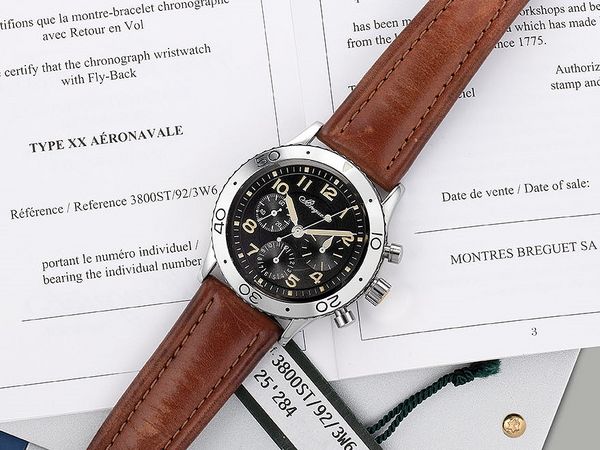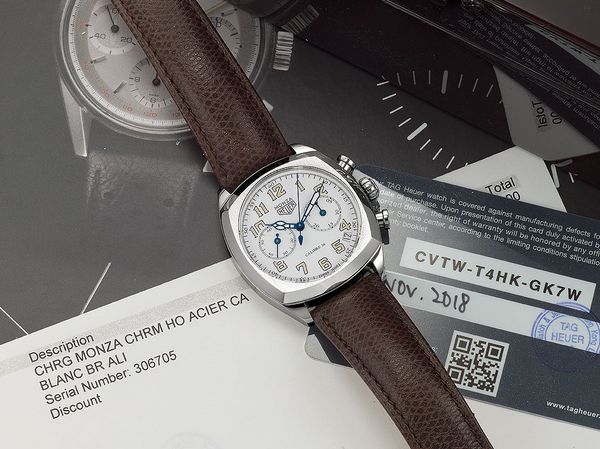by Isabella Proia
Watch manufacturers have been grappling with this for decades, but mostly since the drive to survive mentality of the Quartz Crisis had faded and brands were able to look inward to innovate. They were certainly pushing forward with new designs and technologies, as well as addressing contemporary trends, but always with one eye to the past. Some of the bestselling watches offered in 2021 catalogues are highly reminiscent of vintage models – but they can’t really be called heritage models.
So what sets a heritage model apart from one simply inspired by past references? First and foremost it is how the brand defines and markets the watch. Often these pieces are limited productions and incorporate modifications to the dial, case, or movement that differentiate them from their non-heritage counterparts.
The Hong Kong Watch Auction: XII features a few highly coveted heritage or tribute pieces from some of the world’s renowned manufacturers, offering collectors a rare and exciting opportunity to obtain these watches and own a bit of the history themselves.
Lot 1006 - Breitling Navitimer Reference 806 1959 Re-Edition
Of the tribute or heritage pieces offered in the sale, Breitling’s Navitimer Re-Edition is perhaps the most faithful to its inspiration, the first Navitimer to bear the reference 806 (for more information on early Navitimers please see our previous article on the subject). With meticulous research by the Breitling Heritage department – including but not limited to speaking with collectors of the reference and watchmakers, painstaking examinations of reference 806s owned by collectors and the Breitling Museum, and looking through old catalogues to match the color and texture of the luminous material (which is hand applied, just like vintage Navitimers – they managed to produce almost a perfect replica of a 1959 Breitling Navitimer reference 806 with extremely few departures from the original. The only changes made were the use of Superluminova instead of radium for the luminous material (a legal requisite, I am sure) and increased water resistance (fans of vintage Breitling will recall that Scott Carpenter’s Cosmonaute – effectively a modified 24-hour Navitimer – was damaged when he splashed down in the Caribbean on reentry and was sent to Breitling for repair but never seen again).
A few other notable features that the Breitling Heritage department was determined to incorporate: the 94 beads on the bezel, an acrylic crystal rather than sapphire, solid caseback, and a 40mm case with the bezel diameter bringing it to 40.8mm. Released in 2019 at Basel, it was one of the standouts of the last Basel Fair held in person, and with only 1,959 (try to guess why) pieces, it sold out quickly and it will be offered with a conservative estimate of HK$24,000 - 40,000.
Lot 1005 - Breguet Reference 3800ST Type XX Aéronavale
The eldest of our trio of tributes, the Type XX Aéronavale dates from 1996 (which is a quarter century ago, if you want to feel elderly yourself), predating the purchase of Breguet by Swatch Group. The watch was released a few short years after the acquisition of Nouvelle Lemania, which explains the in-house automatic caliber 582 based on the Lemania caliber 1350 with an additional flyback function.
Though the Type XX was introduced in the 1950s commissioned by the French government for their Navy and Air Force pilots, the present watch does not draw direct inspiration from these earlier Type XXs. In the early 1970s, Breguet submitted a proposal for a new generation of military chronographs, keeping with the original Type XX’s large Arabic numerals and flyback function but with a different case design with larger diameter and thicker lugs – which is reflected in the early 90s version. It is believed that only a very low number of watches were delivered to the French forces, the vast majority being sold by Breguet to civilians. The earliest Type XXs were 38mm in diameter, which was then increased to 40mm, and the present iteration measures 39mm.
It is interesting to think of the multitude of factors that came together for Breguet designers to decide to release this watch in 1996 and resulted in these particular design choices – the color of the luminous material, the gold-tipped crown, and the engraved sides of the case. Regardless, the present example with all of its original accessories is an important reference for the brand as we know it today, as it is still produced with few changes a quarter-century later.
Lot 1007 - TAG Heuer Classic Monza
Whenever I spy cathedral hands on a watch produced in the past thirty years, to me that’s a dead giveaway that this is some sort of heritage-inspired watch. Cathedral hands are typically found on military watches from the earlier part of the twentieth century, where the intricate hour hand was filled with luminous material for visibility purposes. According to scholarship and general consensus, the design of the watch hands draws inspiration from the stained glass windows of a church cathedral, hence the name.
The furthest departure from its original source of our triplicate of replicas, TAG Heuer’s Classic Monza combines the case of a re-edition from 2000, itself a re-edition of the original Monza from 1976, and the dial of a 1933 single-button chronograph. So rather than a faithful tribute, it’s sort of a tribute mash-up, with a combination of design hallmarks from the entire span of the twentieth century. The Classic Monza is labeled a re-edition by the brand, and indeed, it draws direct inspiration from pieces in the TAG Heuer Museum. It just doesn’t pay tribute to a singular watch. When most collectors think of the Monza, they envision the 1976 version, with a black PVD tonneau case, red chronograph hand, and other vivid red dial elements. It was released to commemorate Ferrari’s win at the 1975 Italian Grand Prix at Monza Circuit, a perilous and notoriously fast course.
By releasing this watch as a re-edition Monza, TAG Heuer is making a statement that the 1976 reference is not the whole Monza story, but part of a greater history linked to the beginning of the twentieth century.
With brands recently not just producing faithful renditions, but actually reverse engineering watches from their vintage counterparts, certainly the collector community will see a rise in these homage watches. Technology allows us to connect with our past with increased ease and dependability. Heritage watches can sometimes be polarizing, but those pieces created with great thoughtfulness and care will rise to the top.



